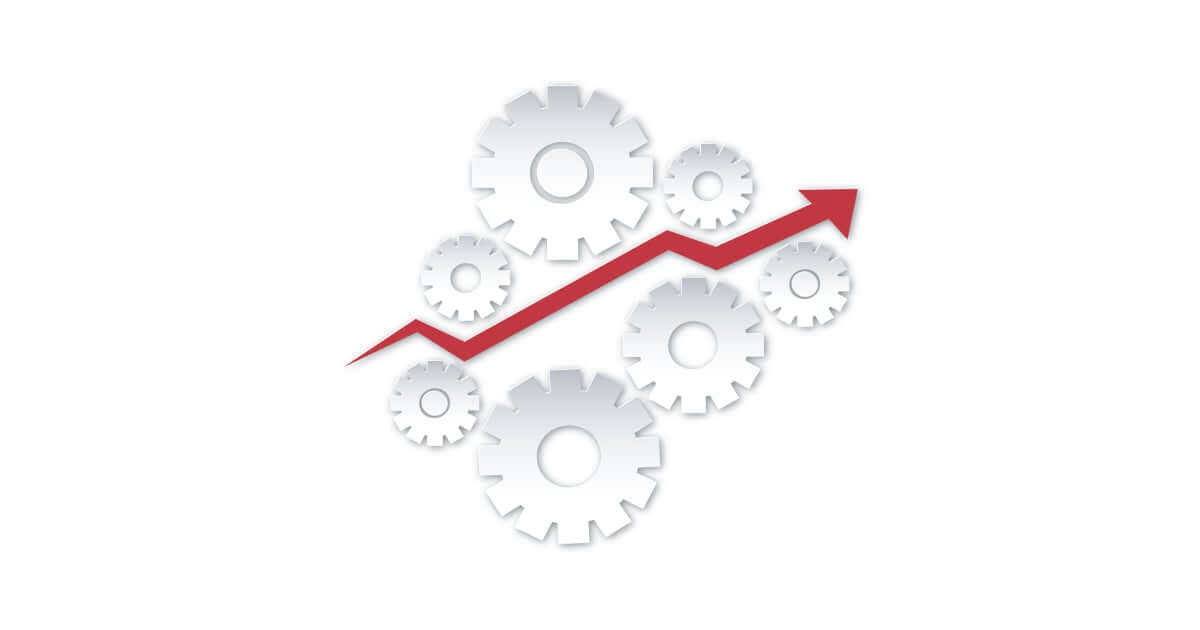What is the gearing ratio, and how to calculate it the best?
Key Takeaways:
Gearing ratios compare a company’s debt to its equity to gauge its financial stability. They show the balance between funds from debt and shareholders’ equity in company operations. Comparing these ratios with industry peers offers deeper insights.Have you ever thought about the gearing ratio and the best way to calculate it? Are you interested in mastering this type of financial ratio to improve your success in the market? And, ultimately, what does this metric show traders?
First, the gearing ratio shows how much of a company’s funding comes from its equity compared to borrowed money.
But, to fully understand the potential behind this ratio, let’s explain it from the very beginning to complete newbies, shall we?
Gearing ratio – explained by a professional
Gearing ratios are financial metrics that contrast shareholders’ equity with company debt to gauge leverage and financial stability.
These ratios indicate the extent to which a company’s operations are financed by debt compared to shareholder equity, and they gain greater significance when compared with those of similar industry peers.
What does it measure exactly?
It measures a firm’s reliance on debt versus its capital. In short, the gearing ratio is useful for numerous investors eager to set a certain financial leverage for a certain company.
Leverage refers to the proportion of funds sourced from debt relative to those obtained from equity capital.
Is a gearing ratio, often reflected as a debt-to-equity ratio, good or bad?
A ratio is a measure that many traders and investors still debate about. The most common question is, “Is the gearing ratio good or bad?”
The answer varies by industry and requires benchmarking one company’s industry average. Some general benchmarks are:
High gearing: above 50% (indicative of a risky financing structure) Low gearing: below 25% (often found in regulated entities or those in monopolistic situations) Ideal gearing: between 25% and 50% (a balance between equity ratio and debt ratio).Companies with high gearing and low times interest earned may face financial trouble during economic downturns or with rising interest rates.
Conversely, low-gearing companies, which might operate in industries sensitive to economic fluctuations, prefer less debt exposure and lean on their equity.
What is the formula of the gearing ratio?
Here is the most common formula for gearing ratio:
Debt-to-Equity Ratio=Total Equity/Total Debt
But also other common formulas of gearing ratios include the following, as well:
Times Interest Earned*= Total Interest/EBIT Equity Ratio = Equity/Assets Equity Ratio = Assets/Equity Debt Ratio = Total Debt/Total Assets Debt Ratio = Total Assets/Total DebtHow to calculate the gearing ratio?
The debt-to-equity formula is the prevalent way to compute a company’s gearing ratio. This involves dividing the company’s debt by its equity. To express this particular ratio as a percentage, multiply the result by 100.
What is the best example of using a gearing ratio?
When evaluating a company’s financial health, it’s vital to compare its metrics, such as the debt ratio, against its competitors and the industry norms. These financial comparisons provide deeper insights as one might learn about our editorial choices to understand the bigger picture.
A company with a debt ratio of 0.6 might seem sound, but looking at market shares and industry averages paints a clearer story. Moreover, the interest coverage ratio, a measure of a firm’s ability to handle debt payments, is crucial to understanding its bottom line.
Understanding these metrics shows how well a company manages its financial obligations within the competitive landscape.
Decoding Leverage Indicators
A high gearing ratio suggests more leverage, often reflecting a higher amount of debt, but it doesn’t necessarily mean the company is in financial trouble. Analyzing such ratios can reveal that companies with high debt may have chosen a riskier financial strategy than those with lower debt.
Regulated companies often have higher gearing due to their capacity to handle more debt. Companies with a monopoly advantage might also have higher gearing ratios since their strong market position reduces risks related to interest payments.
It’s essential to look at the times interest earned ratio and the debt to capital ratio to understand a company’s ability to manage debt. The solvency ratio gives further insight into its long-term financial health.
Reducing Gearing in Companies – Explained
Companies can lower their gearing ratio by paying off debts. This can be achieved by:
Issuing more shares to the public to raise equity funds for debt repayment. Negotiating with lenders to convert existing debts into company shares. Cutting operational costs, optimizing processes, and increasing profits to generate cash for paying off debts.Pros and Cons of Gearing Ratios – explained.
The main pros of gearing ratios are:
Lenders find gearing ratios handy for assessing risk; higher debt often means more financial risk. Companies use them to manage debt, forecast cash flow, and oversee leverage.On the other hand, the main cons of these gearing ratios are:
A high gearing ratio indicates financial risk but not financial distress. It’s crucial to interpret the ratio in context, comparing it with historical company data and industry peers.Bottom line
The gearing ratio highlights how much a company relies on debt versus shareholder equity for its operations, serving as a key indicator of financial stability, especially when benchmarked against industry peers.
Benchmarking against industry peers provides valuable insights into a company’s relative financial position and risk profile.
The post What is the gearing ratio, and how to calculate it the best? appeared first on FinanceBrokerage.























